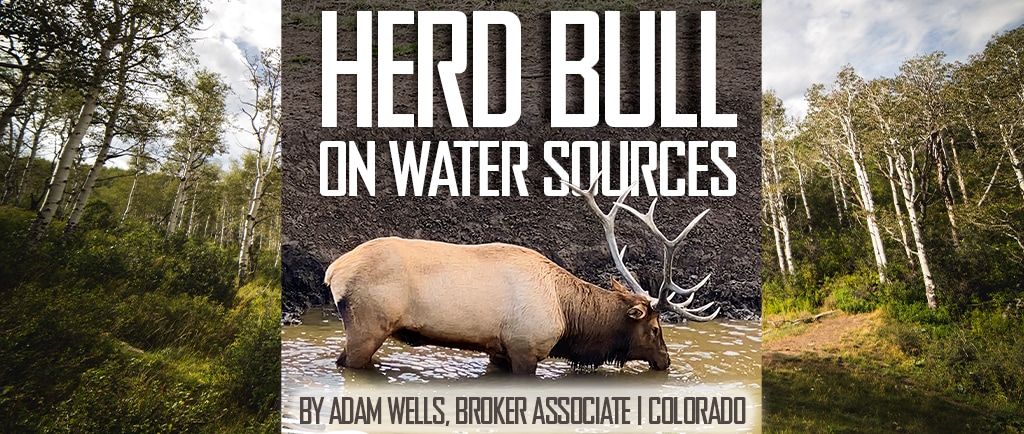Herd Bull On Water Sources
By: Adam Wells | Broker, Colorado
Killing an Elk every year is no small task and not many hunters can claim credit to this accomplishment. Killing a herd bull every year is definitely “next level” and puts you near the pinnacle of the achievements in the hunting world. This type of success requires tremendous knowledge, skill and effort. There are a variety of tactics to choose from to consistently kill older and wiser herd bulls; calling, spot-and-stalk, and hunting over water being the most popular choices. Hunting over water stands out as a top tactic for reducing the risks and maximizing the reward. Hunting for a herd bull over water typically allows for more control of the variables compared to the other Elk hunting tactics. In other words, it reduces the risk of something going wrong. There are lots of components and strategies to consider to consistently hunt over water and kill a herd bull.
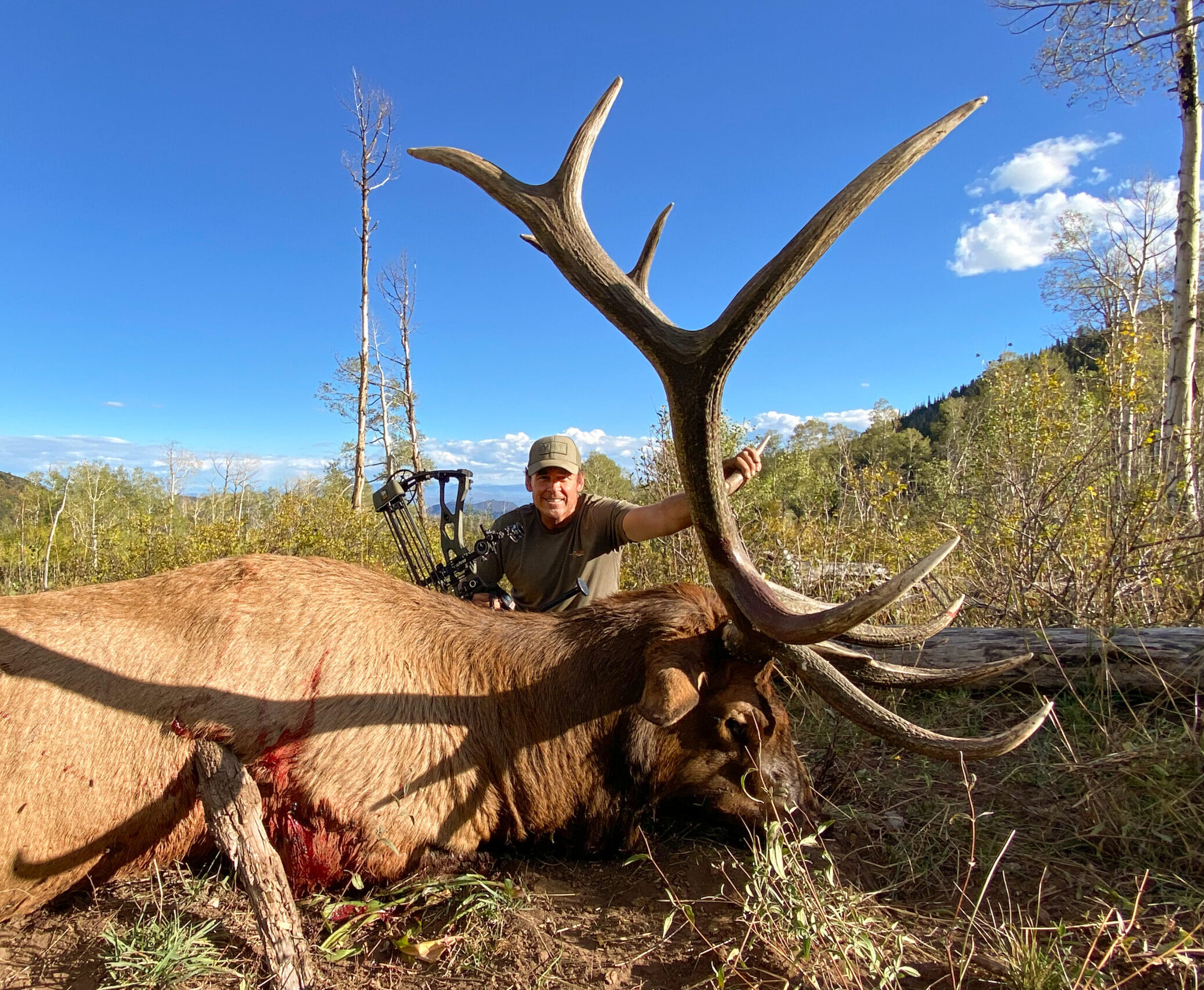
Hunting a herd bull over water can be the least risky and lowest potential impact of the three Elk hunting techniques, and leverages the Elk’s fundamental biology…they need water daily (and oftentimes twice daily). Elk require a lot of water compared to other ungulates to keep their gut balanced and their entire system working correctly. Several studies concluded that Elk need around 4 gallons of water per day during warmer summer and fall months when no snow is present. And in many of the Western U.S. states water is the most limited resource for Elk. Find an Elk watering source and you will find elk visiting shortly. One study showed that there is an exponential decrease of Elk using a range if they need to move more than 1 mile to find suitable water, and another study found 80% of an Elk’s summer range is within 0.25-0.5 miles from water. Hunting a water source that a herd bull frequents increases your odds of a close encounter, plus you know exactly where that encounter will take place, and can strategize accordingly.
When it comes to the relationship between Elk and water, not all water is created equal. “Clean over green” is an Elk’s mantra when choosing drinking water, but when an Elk wants to cool down or play, the cleanliness of the water doesn’t seem to matter much. The source of the water (i.e. “spring”) is often the cleanest and where Elk will choose to drink (keep that in mind if you are developing a natural spring or installing holding tanks). Water sources at higher elevations (even a few hundred feet) often get used more frequently when all else is equal.
How and When Elk Utilize Water Sources
Knowing when a herd bull uses a specific water source during the day and how they approach that water source is critical to designing your ambush. Choose the wrong time and your valuable hunting time is not productive. Choose the wrong setup design and you’ll bump that Elk into the next county.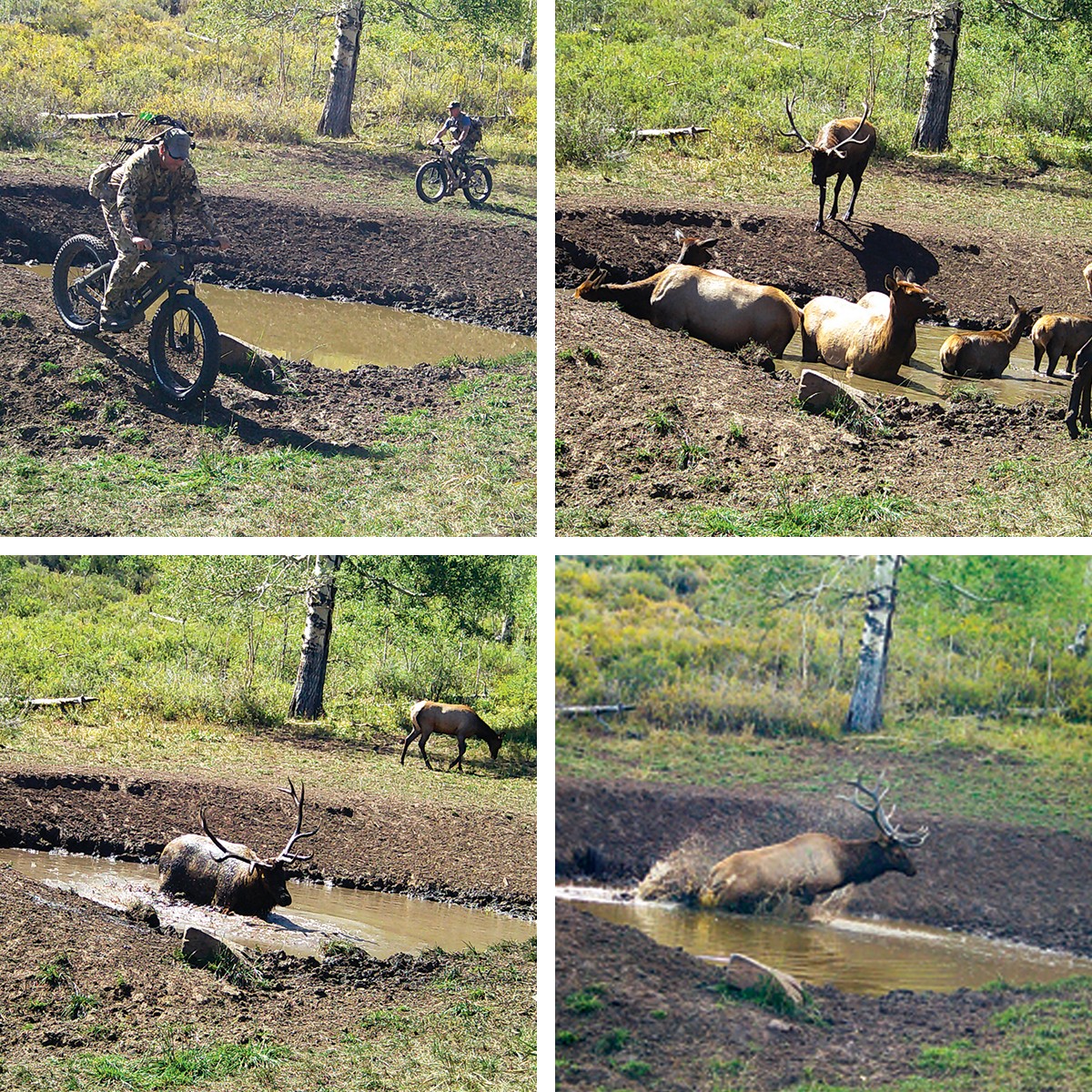
Setting up trail cameras is the best choice to pattern Elk on each water source (*verify all trail camera regulations in your state). If you own the property consider gathering a year’s worth of trail camera data before you hunt those water sources. This due diligence will pay dividends down the road. Start putting cameras out in July and check them around mid-August to inventory the bulls using the water source. Leave the cameras up through the entire season, but STAY OUT of that area. You want to know how Elk uses each water source without any human disturbance. Consider using a high resolution trail camera like the Stealth Cam DS4K Ultimate. The high resolution images/videos will allow you to see the details of the bulls to help identify unique characteristics and better estimate antler size and age. Leaving the trail cameras for such a long duration generally means high capacity SD cards (32GB or 64GB if you’re taking video) and use an external battery or solar panel to keep it functioning. Once you have a complete data set to work with, the planning and design stages can take place.
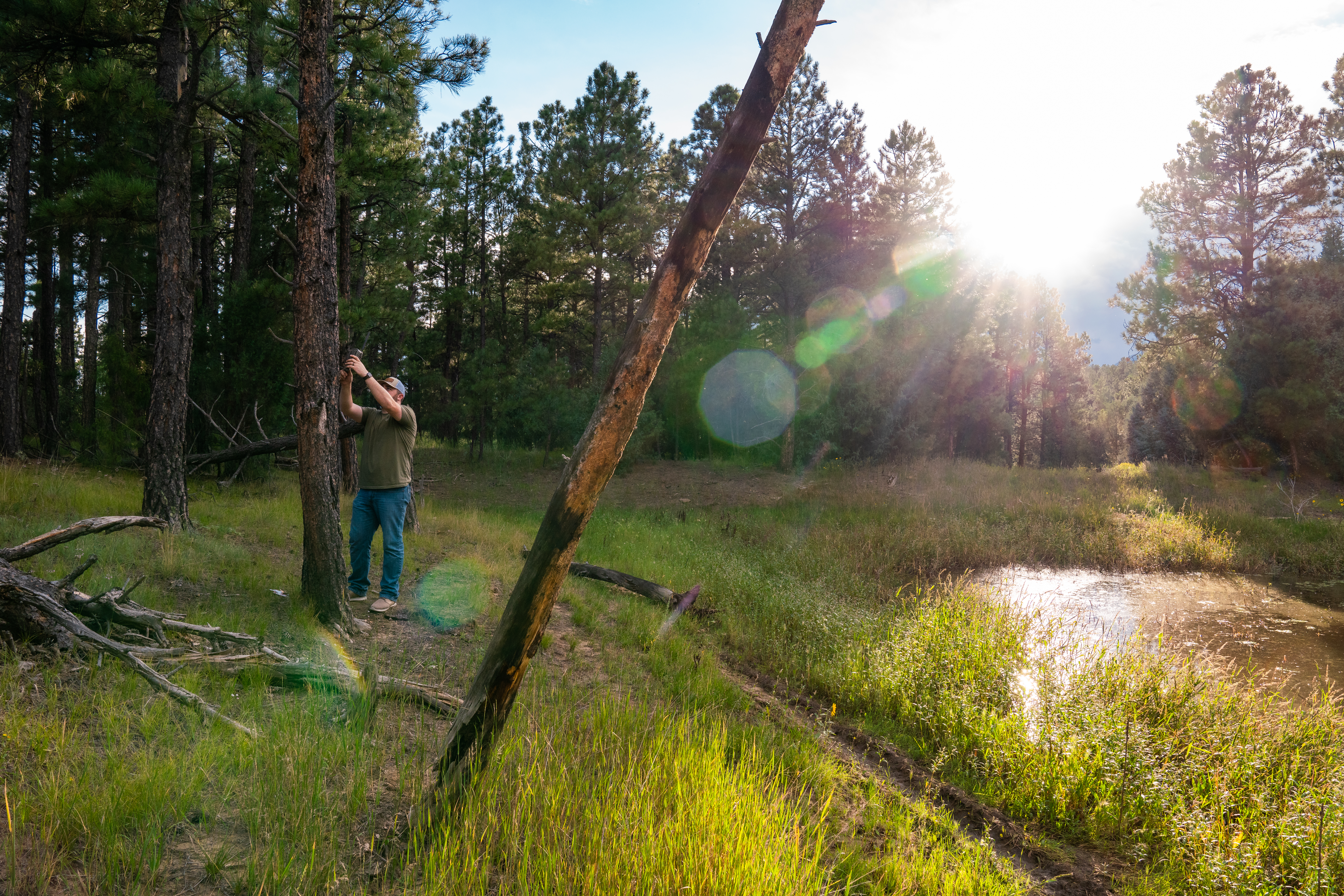
When designing your ambush consider these several factors: the wind, the Elk’s movement patterns, and your entry/exit route. A water source visited by Elk in early morning and late evenings will have a downhill thermal while the ground is cool, pushing scent down hill. Thermals will start to rise in the mornings once the sun warms the ground taking scent uphill. A good rule of thumb is if the Elk are watering while the water source is in the shade of a mountain the thermals will be dropping, and if the water source is in direct sunlight the thermals will be rising. The direction of thermals when the Elk are at the water source is critical to understand how to set your ambush, and when to plan your hunts. You will need to set up your ambush accordingly taking into account the wind direction in relation to both the water source and how elk approach the water source. Elk will almost always use the wind to their advantage upon approaching a water source, so rarely can you set up directly downwind of a water source (this is where the elk will be coming from). Setting up 90 degrees to the wind is your best bet to allow the Elk to approach from downwind and not detect you when they arrive at the water source. You basically want your wind to parallel the Elk’s approach.
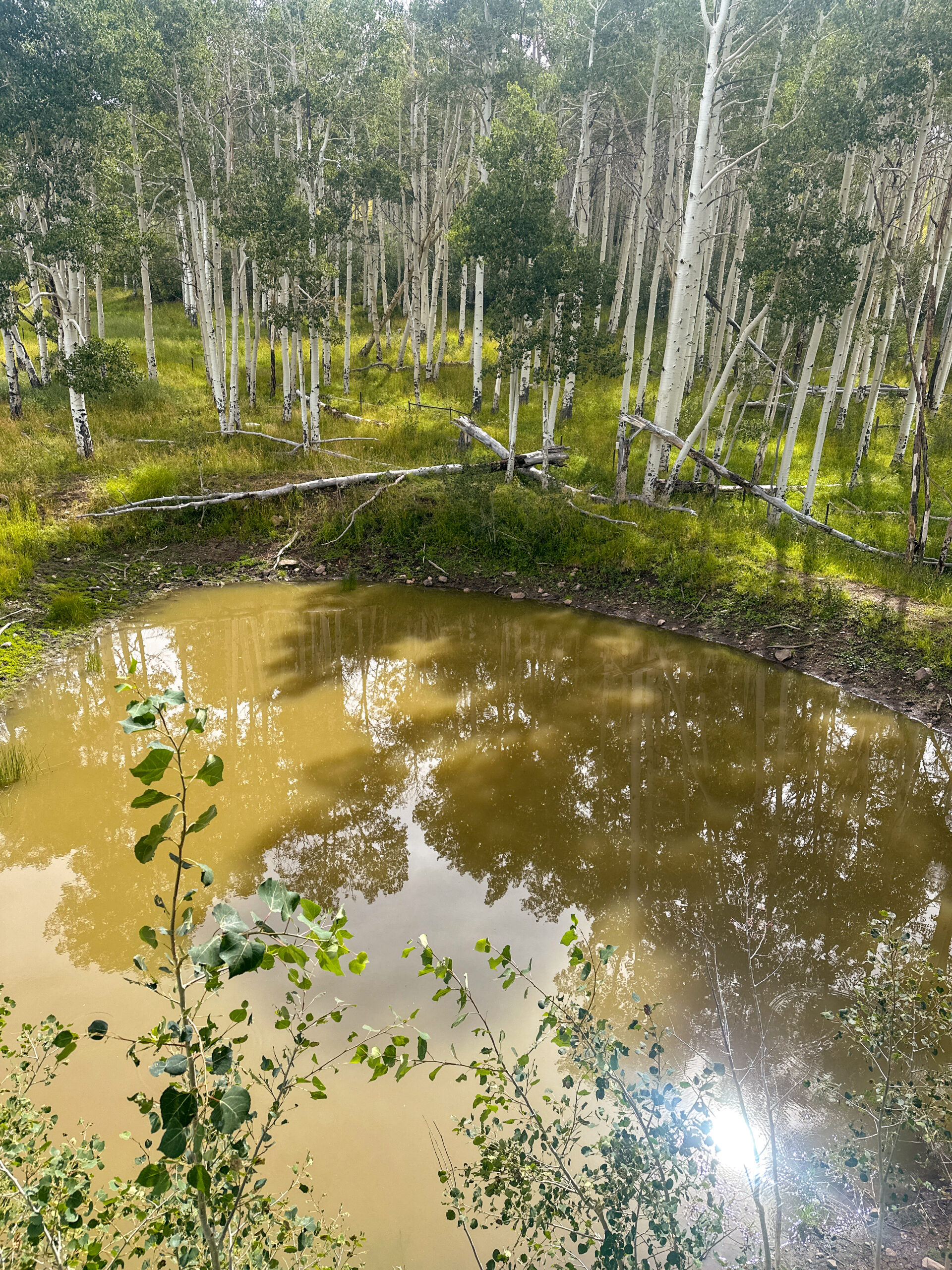
Planning your entry (and exit) into the area is vital as well. You don’t want to put any scent on the ground during your entry that the Elk will cross over on their approach, which will absolutely ruin hunts. You also don’t want to enter through where the Elk are bedding/feeding, nor do you want your scent to drift through there. Planning your entry is as complicated and detailed as your actual ambush location. And to make it exponentially more complicated, if you want to hunt the water source multiple times your exit needs to adhere to the same principles as the entry. Bottom line, once the Elk know you’re in the area, your odds go down drastically, and once the Elk vacate the area because they saw or smelled you they may not return for over a week or more. So there is risk to hunting a water source, but this risk can be strategically planned for and mitigated.
There are tools you can use to help minimize your scent during your hunt and during your entry and exit. Utilizing bikes, especially E-bikes, during your entry and exit will keep almost all your scent off the ground and you won’t be exhausted and all sweaty when you get there. Drive the bike right to the base of your stand and lay it down there. Box blinds like the Hawk blinds do a great job of containing scent, sound, and movement and you can compound the effect by running Oxonics. [*Note: You will never 100% beat an Elk’s nose, but you can reduce your scent’s impact in the area. For example, instead of the Elk picking up your scent at 300 yards away, good scent control (including getting your scent off the ground) may reduce the distance the Elk can detect you to within your effective shot range]. Placing the blind on a trailer will allow you to easier fine tune the location, and you can move the blind between water sources if you switch between archery and rifle seasons.
A herd bull will often come to a water source solo during mid afternoon once he knows all the cows are settled down and not going anywhere, the 2:00-4:00 window is the magic hour to kill a herd bull. Having the herd bull come in solo is very advantageous as you only have to fool his eyes, ears and nose, and he is very direct in his approach (and not weaving off course chasing a cow or smaller bull and catching your scent). The other timing windows to likely see a herd bull on water are before the cows visit the water source, as he kinda sets up shop to check all the cows that come in. The data set from your trail cameras will help you design your strategy accordingly.
Hunting a herd bull from a tree stand over water swings the advantages in the hunters’ favor for several reasons, but isn’t a guaranteed shot opportunity. Hunting up high in a tree gets your scent off the ground and keeps you out of their line of sight which is a huge advantage. Unlike some smart Whitetails, Elk don’t look up (usually). But if the Elk enters the water source from uphill, you may be at eye level with them sitting in your tree stand, and they will pick up movement from a tree stand hunter when at eye level. And non-natural noises are still alarming to them, even if they can’t see you. Any noise from metal, plastic, fabric etc… will alert them.
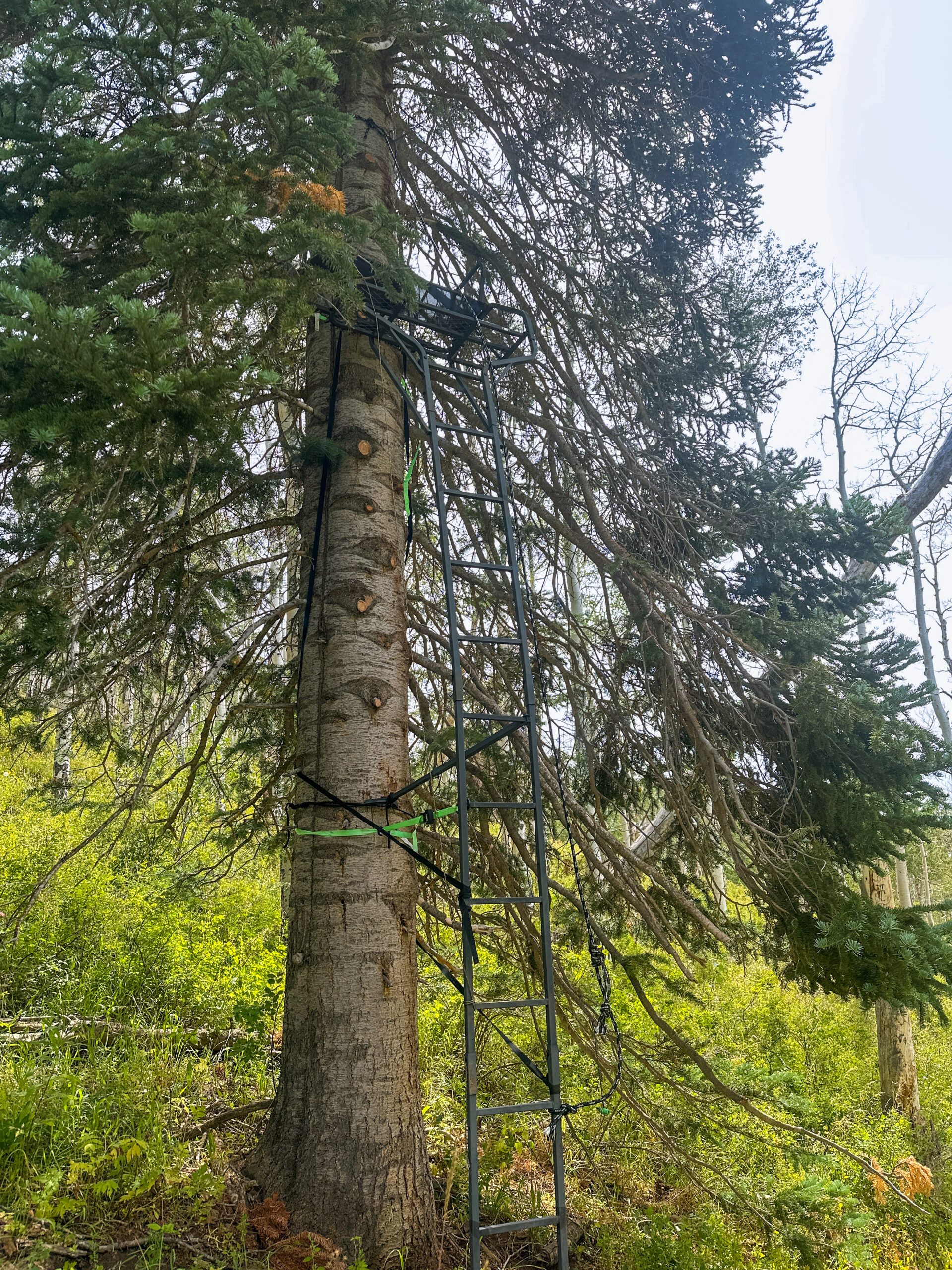
Two additional points to mention about Elk calls and decoys on water sources. Decoys on water sources are a definite NO! That herd bull is already going to an exact spot so there is no need for an additional attractant. Plus, the most effective use for a decoy is to show it to the herd bull from a distance so he has visual confirmation of an “Elk”, then put the decoy away so he has to hunt for that “Elk” once he gets closer….you can’t do this when ambushing over water (and him seeing a stationary decoy standing at the water is unnatural and will make him uncomfortable). Calling to a herd bull, especially mid-day when he is at a distance, can be very effective. If the herd bull is bugling every couple hundred yards looking for cows he can be very responsive to calling. Just make sure the wind is right for him to come downwind of your setup.
Adam Wells is a Real Estate agent licensed in Colorado. He can be contacted by email (adam@sjsportingproperties.com) and phone (970.756.1500)

